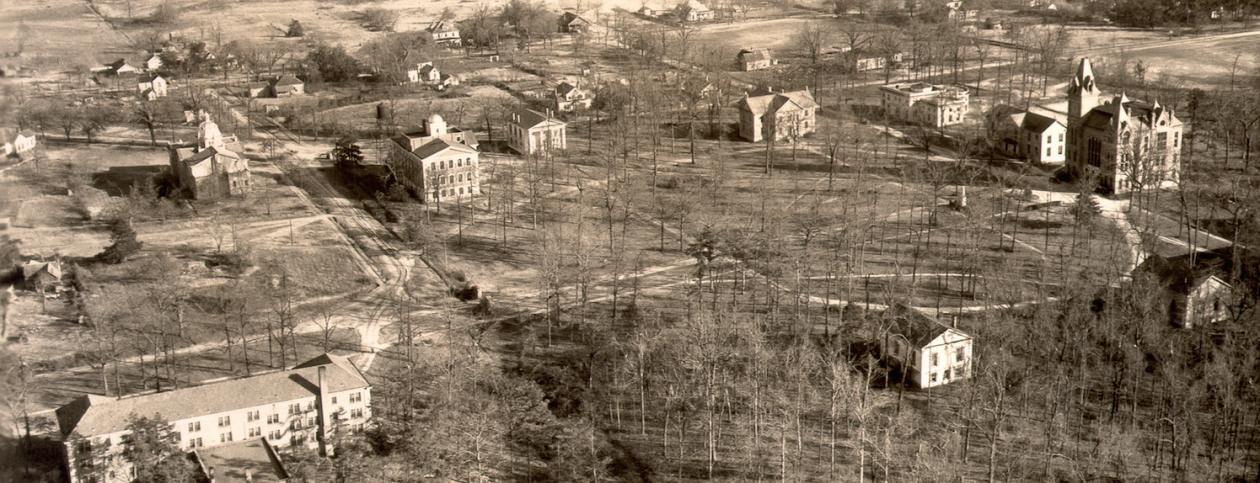The past few years have brought intense controversy over questions about the legacy of the Confederate States of America—more than 150 years after the end of the Civil War. From Baltimore to New Orleans, from Charleston to Memphis, statues and flags have come down. In Georgia, the world’s largest bas relief, depicting Confederate leaders on the side of Stone Mountain, looms at the center of a debate about whether to chisel it into oblivion. Colleges and universities founded before the Civil War have wrestled with what to do about campus monuments to slave owners or the Lost Cause.
At Emory, too, the question has been raised—what monuments to the Confederacy do we have? The answer, I believe, is none. Emory has little in the way of sculpture of any kind on either the Oxford or the Atlanta campus, and nothing that would constitute a monument or memorial to the Confederacy.
The Few Monument—an obelisk standing in front of Seney Hall on the Oxford campus—was erected in 1849 to honor Ignatius Alphonso Few, the first president of Emory College. Dedicated by Few’s fellow Freemasons four years after his death from tuberculosis, the monument long preceded Southern secession.

Another obelisk stands about a hundred yards west of the Oxford College gym, in a small cemetery where at least thirty-two Confederate soldiers lie buried. They apparently died in the makeshift hospitals that occupied Emory College buildings after the Battle of Atlanta. The obelisk has no images or words other than the simple declaration that these were “Our Soldiers.” Federal soldiers who died in the same hospitals lie a mile away, across town, in a common grave in the town cemetery.


On the Atlanta campus, the Haygood-Hopkins Gate honors two alumni who became Emory presidents—Atticus Greene Haygood and Isaac Stiles Hopkins, both of the Class of 1859. Haygood was a chaplain in the Confederate army, but the gate, erected in 1937, honors him and Hopkins as educators, not for any Confederate legacy. Haygood left the Emory presidency in 1884 to help develop colleges established for newly freed slaves, and Hopkins left Emory in 1888 to become the first president of Georgia Tech.

Yet slavery and the Confederacy do appear in Emory history. All of the antebellum presidents, faculty, and trustees of Emory owned slaves. Many alumni and students fought for the Confederacy, thirty-five of them losing their lives. Three Emory graduates became Confederate generals—Edward L. Thomas, Class of 1846; James P. Sims, Class of 1855; and Reuben W. Carswell, Class of 1856. The sons of two Emory presidents, George Foster Pierce and Alexander Means, both fought in the Army of Northern Virginia. Professor Gustavus Orr, later the state school superintendent of Georgia, organized a Home Guard for Newton County in which he served as a captain, while President James R. Thomas served as a lieutenant.
All of this history has been told. Names on Emory campuses remind us of it. Buildings at both Oxford and Atlanta as well as streets on the Atlanta campus bear the names of antebellum presidents Few, Longstreet, Means, Pierce, and Thomas. More than anything, these names link the modern campus to its roots in Oxford, celebrating the survival of a fledgling college rather than remembering the unlamented demise of a way of life or the defense of that way of life by secession and war.
Yet Emory has honored two staunch supporters of the Confederacy. While Emory recognized them for other, extraordinary achievements, their association with the Confederacy complicates their legacy. The next installment will say more about the first of these two men.
Gary Hauk

Enjoyed reading this piece, Gary, and am looking forward to the next installment.
Our book (which, believe it or not, is nearing completion) has a brief but nice section about Atticus Haygood.
Martin
LikeLike
Glad to hear that your book is coming along, Martin. Jamil shared a chapter, which I found enlightening, and I look forward to seeing the completed book in print.
LikeLike